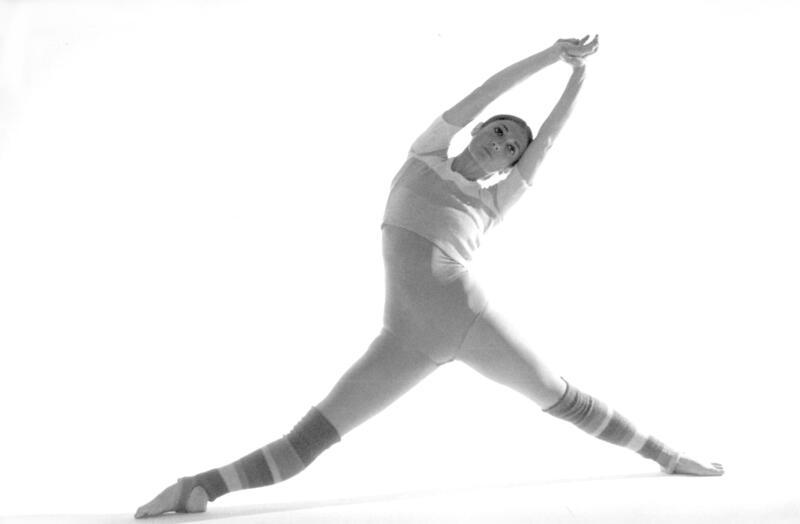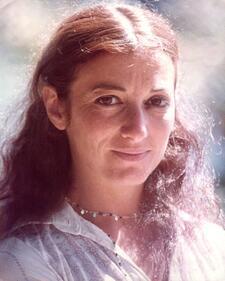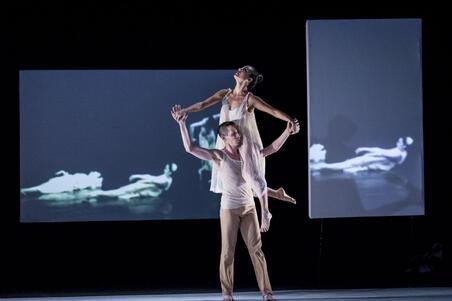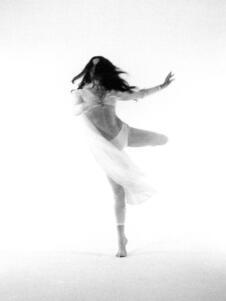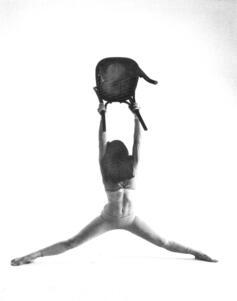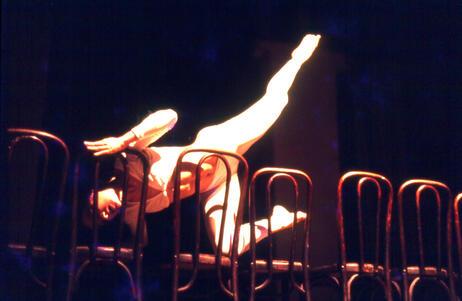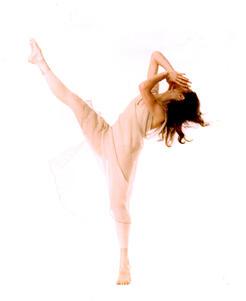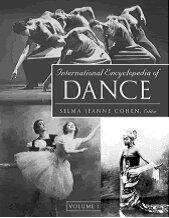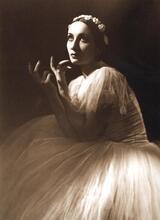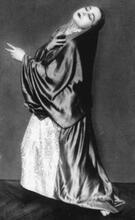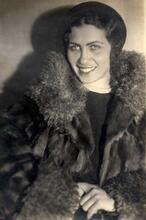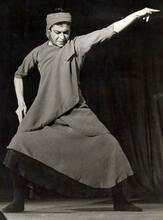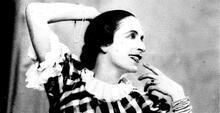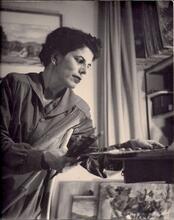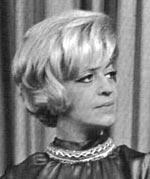Jewish Women and Contemporary Dance in Argentina
In the mid-twentieth century, contemporary dance styles emerged in Argentina, largely due to the contributions of Jewish women, including Ana Itelman, Renate Schottelius, and Ana Kamien, who played critical roles in pioneering modern dance styles in Argentina. These women founded dance studios and choreographed performances in an era plagued by dictatorships and cultural repression. Contemporary dance was a medium through which artists bravely combatted the stifling of culture. Schottelius, for example, choreographed a dance influenced by the political devastation in Argentina. In 1983, when democracy was reestablished in Argentina, contemporary dance was able to flourish, allowing choreographers like Ana Kamien and Ana Itelman to experiment with the visual, choreographic, and musical elements of dance.
Introduction
Although hundreds of people of Jewish descent have participated in Argentinean modern and contemporary dance, three choreographers in particular have made exceptional contributions to this field: Ana Itelman, Renata Schottelius, and Ana Kamien.
Itelman, Schottelius, and Kamien have made deep marks in the field of choreography, both as creators and as teachers. Each has been honored with an Homage presented at the Buenos Aires Contemporary Dance Festival, in the form of a performance created by young artists. The Homage, which is awarded every other year, honors previous generations and promotes awareness of the value of specific people in the development of the art and craft of dance in Argentina.
The Jewish presence in what would become Argentina can be traced back to the early sixteenth century when, following expulsion from Spain and Portugal during the Inquisition, Descendants of the Jews who lived in Spain and Portugal before the explusion of 1492; primarily Jews of N. Africa, Italy, the Middle East and the Balkans.Sephardi Jews fled persecution and migrated with explorers and colonists to settle in areas of the new world. The majority of Jewish immigrants to Argentina, however, were Jews of European origin and their descendants, including most of North and South American Jewry.Ashkenazi Jews who arrived at the end of the nineteenth century and during the first decades of the twentieth century. Among them were modern dance pioneers from Central and Eastern Europe, like Renate Schottelius and Isolde Kleitman, who settled in the major cities of Buenos Aires and Mendoza in the 1930s. In the 1950s and 1960s, a second generation of important Jewish choreographers appeared, including Ana María Stekelman, Mauricio Wainrot, Ana Deutsch, Ana Kamien and, above all, the great choreographer and teacher of choreographers, Ana Itelman.
Ana Itelman (August 20, 1927—September 16, 1989)
Ana Itelman was born in Chile and migrated as a child with her family to Argentina. In the 1940s she joined Argentina’s first modern dance company, led by Myriam Winslow. From 1945 to 1947, she trained in the United States with Martha Graham, Hanya Holm, Louis Horst, and José Limón. Returning to Argentina, Itelman began choreographing and performing solo work. In 1950 she created a modern dance studio with the aim of developing her own company. The company made its debut in 1955 with her fusion-style piece Esta ciudad de Buenos Aires (This City of Buenos Aires), which combined tango dynamics with classical choreography.
Itelman later returned to the United States, where she joined Bard College’s Dance Department as a professor and later as head of the department. She continued her own dance training with Merce Cunningham and Alwin Nikolais and reached out to any source she could for enrichment, such as lighting design classes and acting lessons with Lee Strasberg.
In 1970, Itelman returned to Buenos Aires, where she founded the Café Estudio de Teatro Danza. Her first production there was Alicia en el país de las Maravillas (Alice in Wonderland).
Itelman developed a marvelous body of choreographic work while crafting a personal method for teaching choreography. Her ongoing composition class served as fertile terrain for many dancers who wanted to become independent choreographers. Itelman combined elements she had learned from many different sources, including, among others, the Alwin Nikolais–Murray Louis Improvisation Method, ideas from drama and acting classes, and her own taste and knowledge of classic Russian literature. In the 1980s and 1990s, all the important figures-to-be in contemporary dance in Argentina attended Itelman’s composition classes.
Itelman developed her own choreographic work mostly with the San Martín Theatre’s Grupo de Danza Contemporánea (Contemporary Dance Group), today renamed Ballet Contemporáneo (Contemporary Ballet). Her many iconic pieces included El capote (The cloak), Historia del soldado (The Soldier’s Tale), Las casas de Colomba (The Houses of Colomba, inspired by Tennessee Williams's A Streetcar Named Desire), Paralelo al horizonte (Parallel to the Horizon), Suite de percal (Percale Suite), and Y ella lo visitaba (And She Visited Him). She was posthumously honored with the Konex Award for choreography in 1989.
Itelman lent her own property to host the San Martín Theatre Workshop, where many of the finest dancers enrolled in (and still take) a free three-year program; she later donated the property to the Workshop. After Itelman’s suicide in 1989 following a serious depression, her family donated all of her choreographic notes, video material, and bibliography for archival purposes to the Documentation Center at the same theater. In 2018, through an open, online voting campaign, the Center was named after her. In Argentina, as in other Latin American countries with the exception of Mexico, there are as yet no serious dance history archives; Itelman’s is the only well-preserved dance collection in the country.
In 2014, the Buenos Aires Contemporary Dance Festival’s Homage for Ana Itelman was led by young choreographers Jimena Pérez Salerno and Josefina Gorostiza, along with filmmakers Natalia Ardissone and Jimena Cantero. The evening they crafted included a restaging of Itelman’s early piece Tango and the screening of the commissioned documentary Apuntes sobre Ana Itelman (Notes on Ana Itelman). The directors’ statement published in the festival program reads:
[Itelmania]… a work that questions the relationship between the power of memory, the living archive of the bodies, and the staging of an homage…. We were born in 1984…. We know that Itelman lived until 1989… [We were too young] to build our version of Ana Itelman so we depended on others’ stories and experiences.
The performance featured a dozen of Itelman’s notable disciples, who joined the directors onstage: Monica Fracchia, Sofía Ballvé, Rubén Szuchmacher, Doris Petroni, Roxana Grinstein, Liliana Toccacelli, Diana Szeinblum, Ana Deutsch, Sandro Nunziata, Virginia Ravenna, and Silvia Pritz.
The most striking moments of Itelmania were the times when each of the ten performers (most of them choreographers and/or theater directors in their own right) evoked an exercise or assignment from Itelman’s choreography class. A wave of life seemed to travel through the stage when they recalled names of assignments, either shouting them out or reading them from a piece of paper. These names had been found decades later in notes Itelman kept in a diary of her classes. This element of the performance seems to raise a question about legacy and the different ways artists (especially choreographers) leave a mark on their disciples. What is a stronger learning experience for a new choreographer: assignments in class or watching a piece in a theater? How, if at all, is it possible to follow the invisible thread of an artist’s legacy through generations?
Renate Schottelius (December 8, 1921—September 27, 1998)
Renate Schottelius was born in Germany and came to Argentina at the age of sixteen. She later reflected on her arrival in Argentina in an interview with Stephanie Reinhart (Dancing Female, p. 46):
SR: How did you come to Argentina?
RS: I had to leave Germany; I am half Jewish. I couldn’t have had the career I wanted in Germany. In 1936, at the age of 16, I came alone to Buenos Aires, Argentina. I was from a very small family: my parents, myself, and my grandmother. An Argentinean uncle had enough money to invite only one of us over. My grandmother felt nothing could happen to her because she was not Jewish. My parents did not want to be separated. My mother was Jewish and my father was persecuted because he was against the Nazis. Although it was a hard decision for my parents, I was chosen to come. I was excited; I didn’t understand that I might not see my parents again. As it turned out, my father died at the age of 49 in Colombia, but I was able to bring my mother to Buenos Aires in 1941, where she lived with me for 20 years.
SR: What dance did you find when you came here?
RS: There was no Modern Dance whatsoever.
If Itelman was the most significant choreography teacher in Buenos Aires in the 1980s, Schottelius was the teacher of modern dance technique in those years. As Graciela Martínez, an avant-garde choreographer in the 1960s, wrote in an autobiographical note, “I once took a class with Renate Schottelius,” as if not studying regularly with Schottelius the exception to the rule and Martínez was the rebel of her generation.
In an interview by Carolina Prieto, choreographer Susana Szperling says:
She treated us very respectfully, with some distance. Her feedback was very rich. It was nice to hear her talk, her way of expressing, with her usual yellow turtleneck pullover and her very special bun.... And the way she danced! Her vitality, her strength. Already back then, she stated the idea of the dancer as a professional worker, and that dance can happen anywhere... As Oscar (Araiz) tells, her pieces were diverse: some of them had a lot of humor while others were very strong, alluding to Nazism or to the Missing persons disappeared by the military dictatorship.
Between 1930 and 1983, Argentina experienced a series of coups d’état and military juntas. Arts and culture suffered greatly and censorship and blacklists were common. The last junta, which ruled from 1976 to 1983, was particularly cruel; it instituted a genocide, mirroring many of the methods of the Nazi regime, with full support from the United States government and army. The military dictatorship kidnapped and murdered approximately 30,000 people, who were termed “the disappeared,” in order to erase their real names and avoid responsibility for the massacre. During this last dictatorship, martial law was established and even the right to assembly was denied. Simply standing in line for a performance was dangerous, and lines of spectators reflected solidarity with performers.
One of Schottelius’s landmark pieces, Paisaje de gritos (Landscape of Screams, 1981), reflects the environment in which it was produced. The piece both evoked the Holocaust and alluded to the military dictatorship that had devastated Argentina. Schottelius bravely took on the theme of oppression and state terrorism at a time when it was still active in Argentina, an unusual choice for an official theater like the San Martín. Paisaje de gritos is one example of a message that penetrated government censorship through a metaphor that the censors could not read.
The staging of Paisaje de gritos took an unexpected turn when, while rehearsing an alternative cast with the San Martín Theater’s Grupo Contemporáneo de Danza (Contemporary Dance Group), Schottelius decided to keep both groups of dancers onstage, putting one at the back, elevated on a platform and separated from the main group by a transparent curtain. The ghostly effect suggested the power of memory of our lost ones. It also provoked a kind of mirror or visual echo alluding to the fact that history can repeat itself, even with the worst tragedies of humankind (such as Nazism and Argentinean Military Junta). Yet at the same time Schottelius told the audience that she (like Anne Frank) believes “in the innate goodness of man”; the printed program quoted Anne Frank’s diaries: “I feel sorry for the pain of millions of people, and yet, when I look at the sky, I think that all will change and everything will be good again... because I still believe in the innate goodness of man.”
In 2016, the Buenos Aires Contemporary Dance Festival commissioned choreographer Susana Szperling to direct its Homage to Renate Schottelius. To do so, Szperling revisited both her own memories as a student and the memories of many notable Schottelius disciples, including Oscar Araiz, Ana Maria Stekelman, Ana Deutsch, Andrea Chinetti, Diana Theocharidis, and Alejandra Vignolo. In her interviews, Szperling asked these Argentinean dance giants to evoke, in movement as well as in words, their memories of Schottelius. Ana Deutsch was particularly moving when she recreated an improvisation exercise from Schottelius’s class about moving from one’s gaze.
In the resulting Renate virtual y sus actuales (Virtual Renate And Her Actuals), these artists appear on stage only virtually, projected on screen. Their voices and their bodies constitute the framework for a stage piece in which three dancers (Susana Szperling, Mauro Cacciatore, and Liza Rule Larrea) embody Schottelius’s choreography from her pieces Aria and Paisaje de gritos, as well as exercises from both her technique and composition classes. The screen is also the surface for images extracted from choreographic pieces, classes, and a short documentary in which Schottelius’s own voice is heard, marking the end of the Homage.
Two scenes made up of monologues particularly stand out. One, by pianist Aníbal Zorrilla, who was the accompanist for Schottelius’s technique classes for more than twenty years, tells stories related to Schottelius’s involvement with music for her class. She would ask for particular rhythms and speeds: “I want them to be surprised,” she used to say. In one class she said: “Yes, it is OK to feel the violence of the speed of movement.” The other monologue, by Susana Szperling, is a spoken word plus movement scene, in which Szperling recalls being the odd one out at Schottelius’s class, where she was told: “You don’t respect forms.” Szperling asks herself onstage: “Why did they commission me, if I was not one of Renate’s preferred students?”
Renate virtual y sus actuales premiered on Schottelius’s birthday in 2016 and has had a life beyond the festival, with performances the following year at two theaters in Buenos Aires (25 de mayo and Centro Cultural de la Memoria Haroldo Conti). It also became a performance-lecture presented in December 2018 at Ciclo Cuerpos (Bodies Series, Centro Cultural Matienzo), as well as at academic venues such as the Universidad Nacional de las Artes (National University of the Arts). On June 30, 2022, it was restaged at Borges Cultural Center, funded by the Ministry of Culture of the Nation.
Itelman and Schottelius Collaborate
Democracy was reestablished in 1983, and by 1987, spirits were high; people were experiencing freedom of expression and movement after decades of repression. The streets of Buenos Aires were very much alive and Ana Itelman and Renate Schottelius joined forces to curate a series of dances that would take place outside the black “empty” space of the traditional theater stage. The result was Otras danzas (Other Dances), a series that occupied many unusual spaces at Recoleta Cultural Center, a marvelous building that had been an abandoned monastery, a home for the elderly, and finally a city-owned cultural center. Young choreographers, many presenting their first pieces, were called to perform their own pieces at the building’s patios, staircases, and hallways. Itelman and Schottelius (with the assistance of Silvia Pritz) advised the choreographers about the pieces to be developed onsite. This was one of the first opportunities the Buenos Aires dance community had to exchange artistic views outside the theater and the classroom. Otras danzas marked the beginning of a sense of community for people in the dance field and was a milestone in terms of authorizing dance students to consider themselves artists.
Ana Kamien (b. May 15, 1934)
Dancer and choreographer Ana Kamien has been part of the avant-garde movement of contemporary dance since the 1960s. She was a member of the group of artists gathered in and around the Di Tella Institute in Buenos Aires, a major venue and think tank that encouraged avant-garde artists in visual arts, music, and performing arts (theater and dance). The director and curator of the Performing Arts Series, Roberto Villanueva, gave equal importance to theater, dance, and mime, at a time when most dance recitals were isolated events, rather than a four- to eight-week season.
Ana Kamien and her colleagues Marilú Marini and Graciela Martínez made the Di Tella their center of operations and presented piece after piece there, including Danza Actual (Current Dance, 1963), an experimentation with objects and fabrics that modified the human body, and Danse Bouquet (1965), which included Marvila la Mujer Maravilla contra Astra la Superpilla del Planeta Ultra y su monstruo destructor (Marvilla the Wonder Woman against Astra the Super Villain from the Ultra Planet and her Destructor Monster), in which they played with a pop comic-like sense of humor. For La fiesta, hoy (The Party, Today, 1966), they worked very closely with Kamien’s husband Leone Soninno, a photographer who was very keen to experiment with the slide projection system, altering the images and creating visual scenographies.
The core of these artists’ work at Di Tella in the 1960s was interdisciplinary. In the film Danza Argentina en los 60 (Argentinean Dance in the ‘60s), Kamien reflected: “I want to state that, since the visual artists designed our costumes, the visual aspect was at the same level of importance as the choreographic and the musical aspects… Choreography was not the Supreme God to whom we said ‘Let’s see how we dress this.’ Suddenly the costume determined how we danced. Or the music did. It was a whole thing.” She recalled that many artistic interdisciplinary collaborations started out by chance encounters with visual artists on the streets surrounding the Di Tella building, on a square that was called La manzana loca (The Crazy Apple or The Crazy Square; manzana means both in Spanish).
Marcelo Epstein’s 1971 film Ana Kamien, shot in black and white just after Di Tella Institute was closed down by the dictatorship, shows Ana Kamien dancing in her heyday. Several scenes embody the most distinctive characteristics of the group composed of Martínez, Marini, and Kamien, portraying the elements the dancers were working on, including abstraction of the body using props and costumes that modified and deformed its shape.
As scholar Rodrigo Alonso states:
Ana Kamien, together with filmmaker Marcelo Epstein, also created the first work that can be considered, in all senses, “dance for the camera”… In this film, the stage was completely replaced by a neutral and physical space created through the movements of the camera and the dancer’s body. The spatial fragmentation promoted a visual abstraction. Every movement was considered according to the position of the camera; every shot enhanced the movement isolated from the whole choreography, which remains incomprehensible beyond its audiovisual representation. The editing created its own choreography through the fragments of movement: it did not reconstruct a preexisting kinetic organization. For all this, Ana Kamien is not only one of the first examples of dance for the camera in Argentina: it is also one of the best” (Alonso, “From Tango to Video Dance”).
Kamien has danced her own choreography in all major theaters in Argentina, as well as in Holland, England, Germany, and Israel. Even in the early 2020s, she remains very active in the dance community, having recently served as president of the local association of choreographers (CoCoA-Datei), as well as Artistic Director of Prodanza (Office for the Independent Dance of the city of Buenos Aires).
Laura Arensburg’s film Ana + Leone (2018) provides an intimate look at Kamien’s creative process. The film portrays at its core the collaboration between Kamien and her photographer husband and artistic partner Leone Sonnino. Towards the end of the film, they go into a theater in which they premiered a series of pieces and try to recall one with the help of a surprising object, a broom. While Ana goes onstage and Leone sits in the audience, a dialogue starts in which they remind each other about details of the choreography, the music, and other elements. Kamien goes through the entire choreography, describing orally what she was doing and indicating each movement with her octogenarian body.
Following a 2018 screening of the documentary, Kamien talked about seeing herself onscreen, going into more specific movement details of the piece, as if the filmed scene was not descriptive enough for the audience to grasp what she and her husband had created:
That piece… I have it in my heart. You might have noticed that I couldn’t dance it at the time… [of the filming. Originally] I fell on my knees, and from my knees I fell with my whole body to the ground, like I was beaten. Then, I put my hands on the floor; I jumped up and fell on my knees again… I crawled travelling through the whole stage, and finally while I was on the floor, I kicked with my feet, my hip up, supported by my hands, until I held onto the broom and tried to run away… I remember it with emotion, I am telling it to you again now, after you already saw me doing it on the screen. (Laughs).
The piece in question, created in the 1970s, originally had no title (although it was later called Heroica after the music by Beethoven). It was part of a series in which Kamien and Soninno took inspiration from unfortunate phrases uttered by contemporary public figures, such as the Secretary of Culture or a prestigious dance critic. The phrase that inspired the broom section was: “Watch out, right?” Ingeniously, the push broom in question transforms, changing in function from sweeper to shotgun to crutch to a prisoner’s pole to a cross that Ana bore across stage. The piece ends with the sound of the executioner’s drum and the word “Fire!” followed by a blackout of the stage.
Kamien has been devoted to teaching dance since early in her career. In 2012, when the Buenos Aires Contemporary Dance Festival decided to commission its Homage around her, it commissioned Natalia Ardissone to make a documentary, and many of Kamien’s disciples participated, including Susana Tambutti, Margarita Bali, Silvia Tissenbaum, Andrea Servera, Ana Garat, and Laura Goyechea, as well as Leone Sonnino and choreographers Marilú Marini and Graciela Martínez. A stage piece was commissioned from Ana Garat, who performed Solo para Ana (Solo For Ana). Garat‘s statement for the program read: “229 Defensa St. A staircase. First floor. Behind a glass door, Ana. The music surrounds the bodies that move. In front of my thirteen-years-old eyes, a revelation. To meet Ana was, for me, to know who I am.”
Kamien considers her Jewish identity and its impact on her work to be “implicit” rather than explicit. Her father was from Warsaw and her mother from Odesa; they met and married in Buenos Aires. Kamien also met and married her husband—an Italian Jew who had to flee Italy with his family for England, where he went to school—in Buenos Aires. In a 2023 interview with the author, she reflected, “We are not religious. I think that the Jewish heritage that most impacted my professional life as a dancer were my teenage years spent at the Hanoar Hatzioni [a Zionist youth group]: I acquired the manners and methods that the leaders used to talk to the group members during activities, and applied them later to my dance students. It was a very special way to address the whole group, while speaking to each person in a unique way.”
Ana Kamien’s significance in the realm of Screendance in Argentina and Latin America is another manifestation of her involvement in the avant-garde artistic movements since the 1960s. Even though she was not a filmmaker, she worked very closely with visual arts, photography, and film. Her commitment to both creating and encouraging other choreographers’ creative activity has made a mark in Argentinean contemporary dance methods of production.
As an introduction the film Ana Kamien, Kamien’s voice-over recites a poetic description of herself:
Waterfalls and streams flow through my veins
My bones delineate multiple ravines
My name is Ana Kamien
Seas flow through me
In them I slide
The mountains are my bones
In them I take form
Nature is Mankind
Note:
An earlier version of this article was published in Dance Today magazine: Szperling, Silvina, “Jewish Argentine Princess (The Sequel); A Possible Point of View about Jewish Choreographers and Dance Teachers in Argentina,” Dance Today/Machol Akhshav, No. 36 (September 2019): 69-75.
Alonso, Rodrigo. “From tango to video dance: Dance for the Camera in Argentina.” Paper presented at Dance for the Camera Symposium, University of Wisconsin, 2000; http://www.roalonso.net/en/videoarte/tango.php, accessed 01-24-2023).
Fortuna, Victoria. Moving Otherwise: Dance, Violence and Memory in Buenos Aires. New York: Oxford University Press, 2019.“Legado de una maestra de la danza.” La Nación, September 16, 2004; https://www.lanacion.com.ar/espectaculos/danza/legado-de-una-maestra-de-la-danza-nid636634/
Prieto, Carolina. “Tributo a una maestra y coreógrafa.” Página 12, November 12, 2017; https://www.pagina12.com.ar/75364-tributo-a-una-maestra-y-coreografa.
Reinhart, Stephanie. “Dance in the Bottom of the World in Argentina.” In Dancing Female: Lives and Issues of Women in Contemporary Dance, edited by Sharon E. Friedler and Susan B. Glazer. Routledge: New York, 1997.
Videography:
Apuntes de Ana Itelman (Notes on Ana Itelman), by Natalia Ardissone and Jimena Cantero (2014), https://vimeo.com/108850187 accessed 02/25/2023.
Renate virtual y sus actuales (Virtual Renate and Her Actuals), by Susana Szperling (2016): https://susanaszperling.com/susanaszperlingrenate.html.
Paisaje de gritos, by Renate Schottelius (1981, restaged 1993), https://www.youtube.com/watch?v=NVc0aiQDrF4.
Ana+Leone, by Laura Arensburg (2018) https://vimeo.com/229501057.
Ana Kamien, by Marcelo Epstein (1970) https://vimeo.com/133870952

